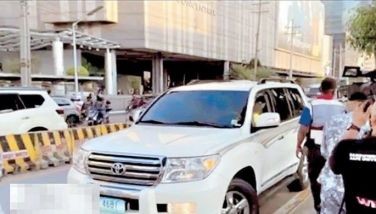Nuances of Public Transport Services
(Part 1- Speed versus distance)
Let’s start from the beginning - the key to better (effective, efficient, reliable, sustainable, inclusive, etc.) mobility is to treat it as a service rather than infrastructure. You do need infrastructure, of course, and need to do it right, too, to attain the end goal, which is service. So, what constitutes good public transport services? The one which takes you from your homes to your destination each day, usually work, and is fast, reliable, and convenient.
It seems simple enough but actually, there are many things to consider like transfers, speed, frequency of services, among others. Let’s start with the very basic, speed. Almost all people want fast trips. Well, not all, because there will always be some who want a leisurely ride and enjoy “watching the scenery” like what my nine-year-old son does. Mostly this happens in the countryside and not in the busy streets of the city.
For the technically-minded, the issue here is acceleration and deceleration --increasing speed from standstill to the running speed and decreasing speed for the next stop. If you ride the jeepney, you can’t really go fast because it needs to stop at the next stop 100-200 meters away. Where there are stops! At the outskirts where there are none, they often stop more frequently because they pick up passengers anywhere. This makes the trip longer! The more and the nearer the stops in between, the longer it takes for you to reach your destination. Arguably, fewer stops produces a faster ride. But you need to walk farther to where the stops are. This is the dilemma.
I was in Congress once where I heard lawmakers ask DOTr why it is not building bullet trains in Metro Manila like the ones in Japan. Maybe he did not know that the Shinkansen reaches upwards of 200 kph! Before reaching that speed, it would have traveled tens of kilometers to the next station. In fact, when the first Shinkansen line was planned from Tokyo to Nagoya, it was supposed to bypass Yokohama as no station was planned there. Yokohama protested, so the Yokohama station stands there today. That may be an exception. But this truth remains --transport services with higher speeds results in stations much farther apart. You can’t go 200 kph with stations every corner.
Transit modes that are fast result in services that start/end/transfer at stops or stations which are oftentimes relatively inaccessible by walking from where you are or where you are going. This means you may need to use another lower-capacity mode to get home. There is no single mode that can serve all our mobility needs, we need combinations of many modes, from walking to the fastest trains. It’s how we balance the needs of the people with the mixture of capacities and configuration which will determine whether we have livable, inclusive, and sustainable mobility, or we go up notches higher in the world rankings of the world’s worst traffic, or down in the list of livable cities. (To be continued)
- Latest























